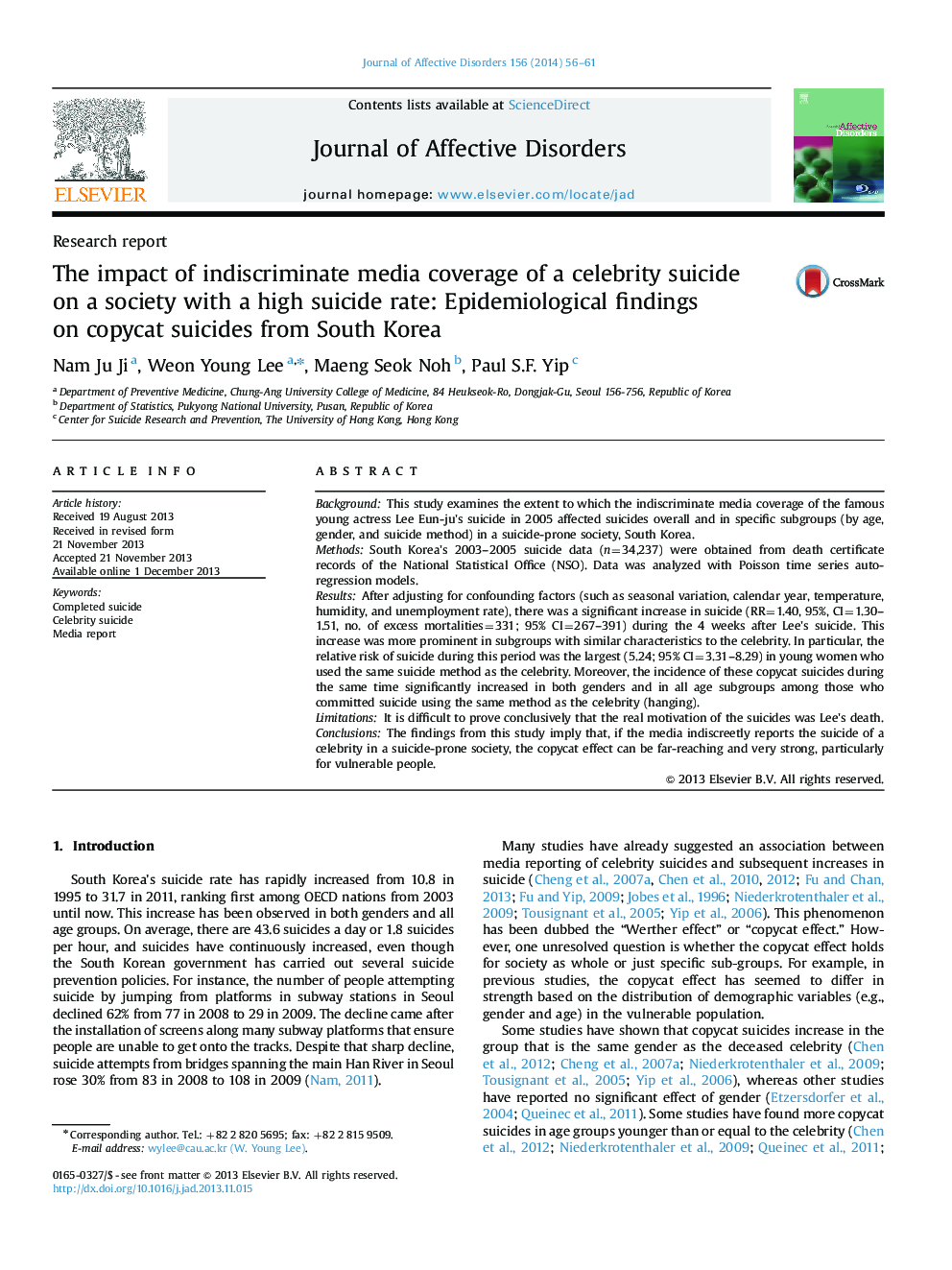| Article ID | Journal | Published Year | Pages | File Type |
|---|---|---|---|---|
| 6233804 | Journal of Affective Disorders | 2014 | 6 Pages |
BackgroundThis study examines the extent to which the indiscriminate media coverage of the famous young actress Lee Eun-ju's suicide in 2005 affected suicides overall and in specific subgroups (by age, gender, and suicide method) in a suicide-prone society, South Korea.MethodsSouth Korea's 2003-2005 suicide data (n=34,237) were obtained from death certificate records of the National Statistical Office (NSO). Data was analyzed with Poisson time series auto-regression models.ResultsAfter adjusting for confounding factors (such as seasonal variation, calendar year, temperature, humidity, and unemployment rate), there was a significant increase in suicide (RR=1.40, 95%, CI=1.30-1.51, no. of excess mortalities=331; 95% CI=267-391) during the 4 weeks after Lee's suicide. This increase was more prominent in subgroups with similar characteristics to the celebrity. In particular, the relative risk of suicide during this period was the largest (5.24; 95% CI=3.31-8.29) in young women who used the same suicide method as the celebrity. Moreover, the incidence of these copycat suicides during the same time significantly increased in both genders and in all age subgroups among those who committed suicide using the same method as the celebrity (hanging).LimitationsIt is difficult to prove conclusively that the real motivation of the suicides was Lee's death.ConclusionsThe findings from this study imply that, if the media indiscreetly reports the suicide of a celebrity in a suicide-prone society, the copycat effect can be far-reaching and very strong, particularly for vulnerable people.
